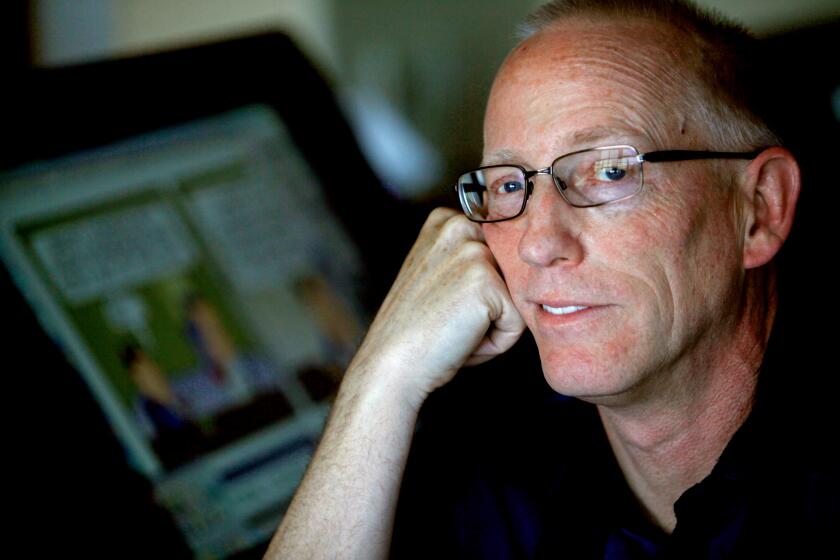Review: Amie Dicke photographs as powerfully compromised objects
- Share via
Digital technology has largely dematerialized photography for the general public.
Pictures are now shown and exchanged more on screen than hand-to-hand. The work of a growing number of artists counters this trend and rematerializes the medium, emphasizing the photograph’s identity not just as an image carrier, a vehicle, but as an object.
Artists in the late ‘60s, responding to a different set of stimuli, were among the first to actively exploit the sculptural possibilities of photography (Cherry and Martin held a great show on this subject last year). The new generation tends to work larger, louder, brighter, bolder.
PHOTOS: Arts and culture by The Times
Amie Dicke, based in Amsterdam, is a fine exemplar. In an installation at Anat Ebgi, she immerses color prints in a large, shallow pool of water to create a topographical image-map that erodes and distorts over time.
In her most powerful work, she activates photography’s twin capacities to conjure presence and amplify absence.
She takes sandpaper to photographic portraits, scraping away the information-dense surface and leaving rough, white, rubbed-raw voids. The abrasions are partial, selective, akin to editing or erasure. Faces go missing, but hair and clothing typically remain. Some areas look like they have been clawed by fine needles; others are more aggressively canceled, the paper scrubbed all the way through, leaving small holes.
The destruction is generative, yielding works that are at once haunting apparitions, censored documents, performative, material traces.
ALSO:
Best of 2013: Christopher Knight’s art picks
Barbra Streisand on Bette Midler’s performance as Sue Mengers
A new L.A. identity takes shape in 2013 as city embraces urban life
Anat Ebgi, 2660 S. La Cienega Blvd., (310) 838-2770, through Jan. 4. By appointment only through the holidays. www.anatebgi.com
More to Read
The biggest entertainment stories
Get our big stories about Hollywood, film, television, music, arts, culture and more right in your inbox as soon as they publish.
You may occasionally receive promotional content from the Los Angeles Times.










